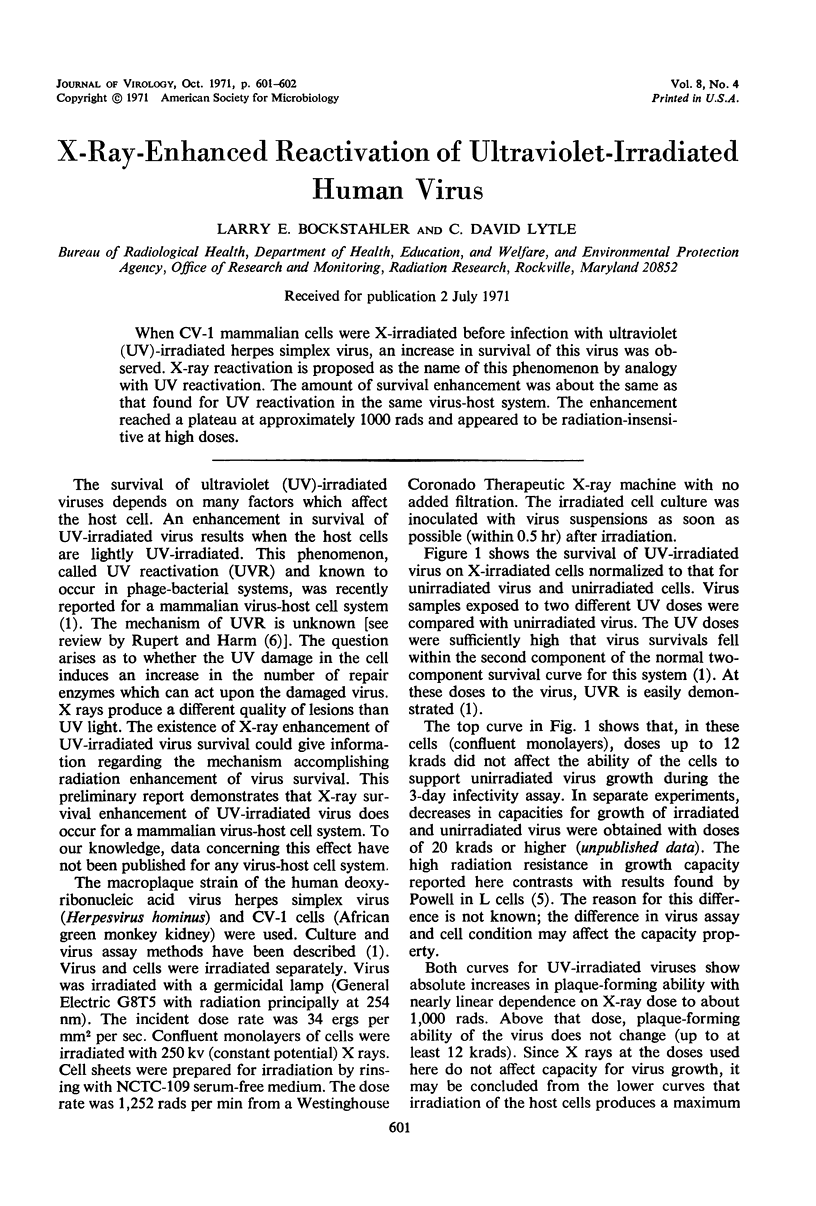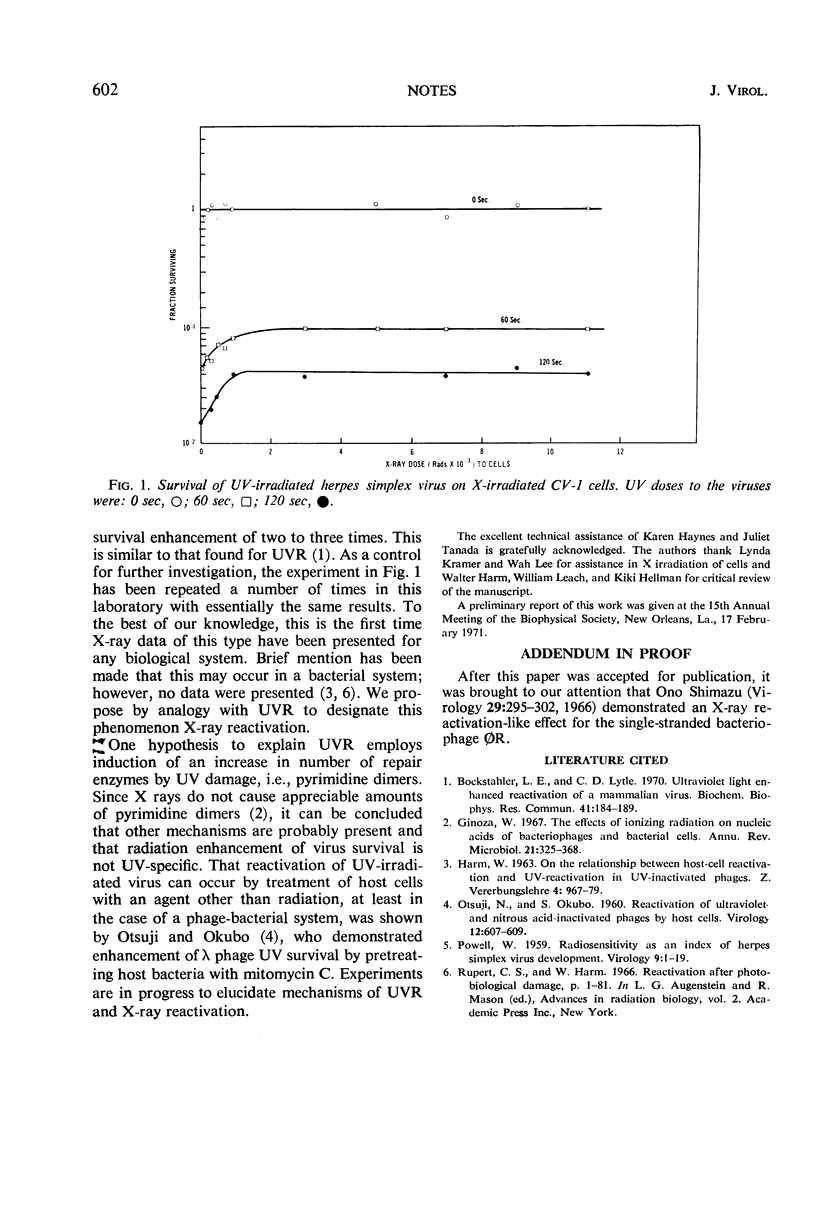Abstract
When CV-1 mammalian cells were X-irradiated before infection with ultraviolet (UV)-irradiated herpes simplex virus, an increase in survival of this virus was observed. X-ray reactivation is proposed as the name of this phenomenon by analogy with UV reactivation. The amount of survival enhancement was about the same as that found for UV reactivation in the same virus-host system. The enhancement reached a plateau at approximately 1000 rads and appeared to be radiation-insensitive at high doses.
Full text
PDF

Selected References
These references are in PubMed. This may not be the complete list of references from this article.
- Bockstahler L. E., Lytle C. D. Ultraviolet light enhanced reactivation of a mammalian virus. Biochem Biophys Res Commun. 1970 Oct 9;41(1):184–189. doi: 10.1016/0006-291x(70)90486-9. [DOI] [PubMed] [Google Scholar]
- Ginoza W. The effects of ionizing radiation on nucleic acids of bacteriophages and bacterial cells. Annu Rev Microbiol. 1967;21:325–368. doi: 10.1146/annurev.mi.21.100167.001545. [DOI] [PubMed] [Google Scholar]
- OTSUJI N., OKUBO S. Reactivation of ultraviolet- and nitrous acid-inactivated phages by host cells. Virology. 1960 Dec;12:607–609. doi: 10.1016/0042-6822(60)90185-9. [DOI] [PubMed] [Google Scholar]
- Ono J., Shimazu Y. Ultraviolet reactivation of a bacteriophage containing a single-stranded deoxyribonucleic acid as a genetic element. Virology. 1966 Jun;29(2):295–302. doi: 10.1016/0042-6822(66)90036-5. [DOI] [PubMed] [Google Scholar]
- POWELL W. F. Radiosensitivity as an index of herpes simplex virus development. Virology. 1959 Sep;9:1–19. doi: 10.1016/0042-6822(59)90096-0. [DOI] [PubMed] [Google Scholar]


